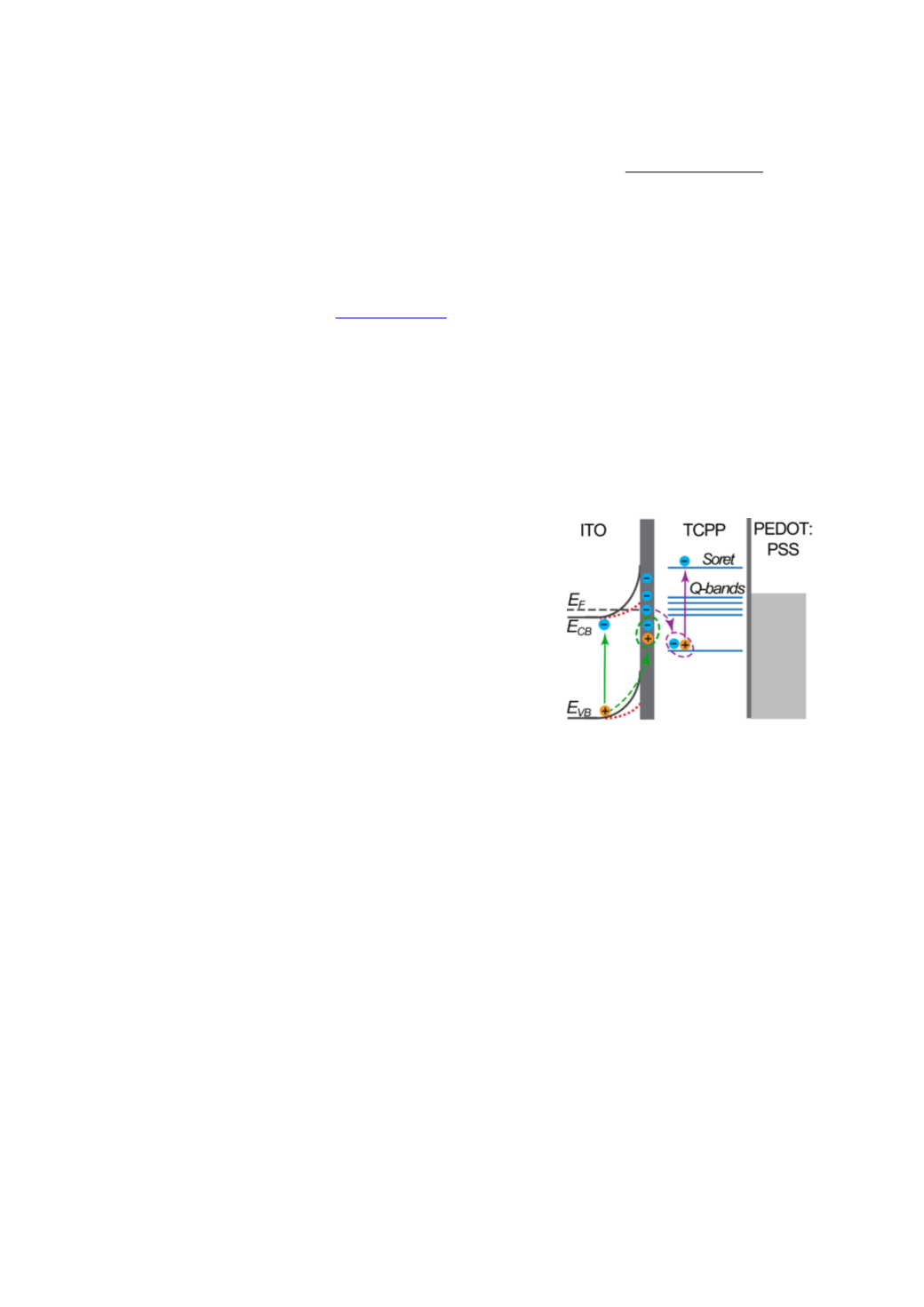
Photoconductance of ITO/Conductive Polymer Junctions in the UV and Visible Ranges
Yulia Furmansky
a,b,c
, Shlomi Sergani
d
, Nurit Ashkenasy
b,c
, and Iris Visoly-Fisher
a,c,
a
Department of Solar Energy and Environmental Physics, Swiss Institute for Dryland
Environmental and Energy Research, Jacob Blaustein Institutes for Desert Research,
b
Department of Materials Engineering,
c
Ilse Katz Institute for Nanoscale Science and
Technology,
d
Department of Chemistry,
Ben-Gurion University of the Negev, Be’er Sheva 84105, Israel
Tel: +972-8-6563500
Controlling charge transfer at ITO/conductive polymer junctions is of special importance for
organic photovoltaic (OPV) devices and organic light emitting diodes (OLEDs), where ITO
is often the transparent electrode of choice. ITO/ conductive polymer junctions are shown
herein to exhibit photoconductance under UV illumination due to photo-induced decrease of
an electron barrier at the ITO-polymer interface by discharging of ITO surface states, related
to the adsorption of oxygen species. Furthermore, ITO surface modification by photo-active
porphyrin adsorption is shown to sensitize the ITO/conductive polymer junctions by
extending the photoconductance to the visible range, to which ITO is transparent. This
process is ascribed to discharging of ITO surface states by
recombination with photo-generated holes in the photo-
excited molecules. Such sensitization is highly relevant for
organic optoelectronic devices utilizing ITO interfaced
with photoactive organic species and operating in the
visible range, such as OPV and OLED devices, and might
be applicable also to other UV-photoconductive metal
oxide electrodes.
O 45
-107-


